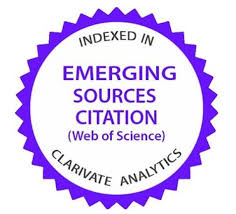Anonymisation, confidentiality, and informed consent
1) Anonymisation Policy
Purpose
This journal requires authors to protect participant identity and privacy by removing or masking direct and indirect identifiers from manuscripts and all supplementary materials. Where there is any doubt that anonymity can be preserved, written consent for publication is required before submission.
Scope and definitions
- Direct identifiers include names, initials, exact dates of birth, faces in photographs, social media handles, email addresses, medical record numbers, or exact geolocation.
- Indirect (quasi) identifiers include combinations of demographic or clinical details that could reasonably re-identify an individual (e.g., rare disease + small community + age band).
- Anonymisation must not distort scientific meaning (e.g., use cell suppression or aggregation rather than inventing data).
Minimum author requirements
- Remove/blur faces and identifying marks in images; simple “eye-bar” masking is insufficient.
- Generalise dates and small-cell counts; consider data minimisation in tables/figures.
- State in the Methods or Ethics section how anonymisation was performed.
- If anonymity cannot be guaranteed, obtain and retain written consent for publication (see “Consent for Personal Data and Media”).
Editorial checks
Editors may request a description of anonymisation steps and, where necessary, evidence that consent for publication was obtained.
2) Confidentiality Policy
Commitment
The journal safeguards the confidentiality of submitted manuscripts, reviewer identities (where applicable), and participant information obtained during editorial handling. Materials under review must not be shared or used for purposes other than peer review.
Expectations for editors and reviewers
- Do not disclose any content from submissions without written permission from the Editor-in-Chief.
- Do not retain or use data, analyses, or ideas from submissions for personal advantage.
- Report any suspected privacy breaches immediately to the Editor-in-Chief.
Participant information in publications
Only information essential to scientific understanding will be published, and then either anonymised or accompanied by explicit consent for publication (see related policies below).
Complaints
Suspected breaches of confidentiality will be investigated according to COPE guidance. Contact: Prof. Lazar Stošić, Editor-in-Chief — editor@ijcrsee.com.
3) Informed Consent for Participation in the Study
Suggested URL: /policies/informed-consent-participation
Requirement
Manuscripts reporting research involving human participants must state:
- the approving research ethics committee/IRB (name and institution),
- the approval number/code and date, and
- that informed consent for participation was obtained from all participants or their legally authorised representatives.
Studies must adhere to the World Medical Association Declaration of Helsinki.
Minors and vulnerable groups
For minors, obtain consent from a legal guardian and age-appropriate assent from the child where feasible.
Where to place the statement
Include an “Ethics Approval and Consent to Participate” subsection in the Methods (or an Ethics section) with IRB/EC details and consent wording.
Example wording for authors
“This study was approved by the Institutional Review Board of [Institution] (Approval No. XXXX, Date). Written informed consent for participation was obtained from all participants (or their legal guardians). The study complied with the Declaration of Helsinki.”
Animal studies
For animal research, state ethics approval and compliance with EU Directive 2010/63/EU and report according to ARRIVE 2.0.
4) Consent for Personal Data, Images, Audio, or Video in Publications
Suggested URL: /policies/consent-personal-data-media
When consent for publication is required
If any identifiable personal data or recognisable images/audio/video will be published, authors must obtain written consent for publication that explicitly acknowledges online, open-access distribution. Masking the eye region alone is not an adequate de-identification method.
Minimum elements of the consent for publication
- Clear description of what will be published (text, photos, audio/video).
- Statement that materials may be freely accessible online and redistributed.
- For EEA data subjects, consent must meet GDPR standards (freely given, specific, informed, unambiguous). Retain dated copies; provide to editors on request.
Special populations
For minors, obtain legal-guardian consent and, where appropriate, the child’s assent; identifiable patients should be shown the manuscript to be published before consenting.
Example wording for authors
“Written consent for publication of identifiable information/images was obtained from the participant (or legal guardian). The consent form states that the article and associated media will be openly available on the internet.”
Contact
Policy questions: Prof. Lazar Stošić, Editor-in-Chief — editor@ijcrsee.com.







